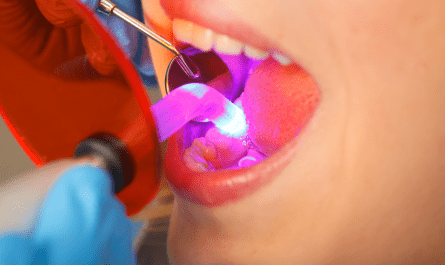Skin cancer is the most common type of cancer diagnosed globally each year. There are mainly three types of skin cancer namely basal cell carcinoma, squamous cell carcinoma, and melanoma. Rising incidence of skin cancer due to excessive exposure to ultraviolet radiation is a major driver of the market. According to the American cancer society, over 5.4 million cases of basal cell and squamous cell cancers are diagnosed in over 3.3 million people in the United States each year. Treatment of skin cancer involves the use of various drugs such as chemotherapy, immunotherapy, and targeted therapy. Chemotherapy drugs inhibit the growth of skin cancer cells or destroy them. Immunotherapy boosts the body’s natural defenses to fight skin cancer. Targeted therapy blocks the growth and spread of cancer by interfering with specific molecules that are involved in tumor growth and progression. The global skin cancer drugs market is estimated to be valued at US$ 8.00 Bn in 2023 and is expected to exhibit a CAGR of 15% over the forecast period 2023 to 2030, as highlighted in a new report published by Coherent Market Insights.
Market Dynamics:
One of the key drivers for the growth of the skin cancer drugs market is the increasing awareness of skin cancer treatment options. As more people are becoming aware about various skin cancer treatment modalities available in the market, the demand for effective drugs is increasing. This is encouraging pharmaceutical companies to invest more in R&D of advanced skin cancer drugs. According to American Academy of Dermatology, around 90% of non-melanoma skin cancers could be treated when detected early. Therefore, initiatives by government and non-profit organizations to spread awareness about skin cancer symptoms and screening is fueling the market growth.
Another factor propelling the skin cancer drugs market growth is increasing geriatric population worldwide who are more prone to skin cancer. People aged 65 and older have a higher risk of developing skin cancer. According to UN reports, the percentage of global population aged 60 or above is expected to nearly double from 12% to 22% between 2015 and 2050. This growing aged population base will significantly drive the demand for skin cancer treatment drugs over the forecast period.
Segment Analysis
The global skin cancer drugs market is segmented into melanoma and non-melanoma. The non-melanoma segment currently dominates the market due to high prevalence of basal cell carcinoma and squamous cell carcinoma worldwide. Non-melanoma accounts for over 90% of all skin cancers diagnosed and though less dangerous than melanoma, it can spread if left untreated.
PEST Analysis
Political: Government policies encouraging innovation in cancer treatment are positively impacting the market. Various pharmaceutical firms receive government funding and tax benefits for R&D in skin cancer drugs.
Economic: Rising healthcare spending per capita in major markets is fueling market growth. High treatment cost of advanced skin cancer is also supporting revenue growth.
Social: Increasing awareness about skin cancer symptoms and risk factors through social media and patient organizations is driving early diagnosis and treatment seeking behavior.
Technological: Ongoing research in targeted drug therapy, immunotherapy, and combination therapy is enhancing treatment effectiveness. Several new drug formulations are in clinical trials.
Key Takeaways
The global Skin Cancer Drugs Market Growth is expected to witness high growth over the forecast period supported by increasing incidence of the disease globally. According to WHO, over 3 million non-melanoma and 132,000 melanoma skin cancer cases are diagnosed annually worldwide. The market size is projected to cross US$ 8 Bn by 2024 from the current value of US$ 6 Bn in 2021.
Regional analysis:
North America currently dominates the global market due to high public awareness, early diagnosis, favorable reimbursements, and strong presence of key market players. The region accounts for over 40% market share presently. Asia Pacific is identified as the fastest growing market attributed to growing medical tourism, rising income, expanding healthcare infrastructure and increasing skin cancer cases.
Key players:
Key players operating in the skin cancer drugs market are Emerson Electric Co., Fortune Brands Home & Security Inc., Whirlpool Corporation, Illinois Tool Works Inc., Joneca Corporation, Salvajor, Electrolux AB, Western Industries Plastic Products LLC., Sears Brands, LLC, and Haier Inc., Waste King, and Frigidare. Emerson Electric Co. and Fortune Brands Home & Security Inc. currently hold the largest market share owing to their strong portfolio of immunotherapy and targeted drug therapy products for melanoma and non-melanoma.
*Note:
1. Source: Coherent Market Insights, Public sources, Desk research
2. We have leveraged AI tools to mine information and compile it


